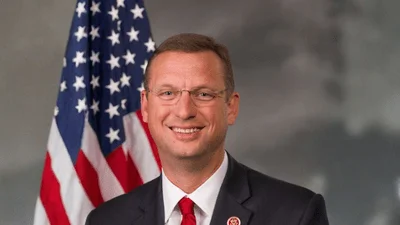Tom Vilsack Secretary of U.S. Department of Agriculture (USDA) | Official Website
WASHINGTON, July 23, 2024 — The Biden-Harris administration announced today additional measures to protect western communities from increasingly severe wildfires by enhancing early detection capabilities through satellite technology. The Department of the Interior and U.S. Department of Agriculture (USDA)’s Forest Service have entered into an agreement with the Department of Commerce’s National Oceanic and Atmospheric Administration (NOAA) to utilize data from NOAA's Geostationary Operational Environmental Satellite — R series (GOES-R) for rapid wildfire detection and reporting. This initiative is backed by a $20 million investment from the President’s Bipartisan Infrastructure Law, with $10 million each allocated from the Interior and Agriculture Departments.
President Biden’s Investing in America agenda, supported by the Bipartisan Infrastructure Law, aims to provide essential resources to communities nationwide. The law allocates $5 billion over five years for preparedness, fuels management, post-fire restoration, and fire science.
“This partnership is one of the many ways we are investing in technology to improve firefighter and community safety,” said Secretary of Agriculture Tom Vilsack. “Wildland firefighting will always require highly skilled individuals working on the ground, but with more real-time information we can reduce the risks to crews and pilots, and improve our response time, reducing the risk to impacted communities.”
“This collaborative effort demonstrates how the federal government is deploying resources from President Biden’s historic Investing in America agenda to improve its emergency response capabilities and address increasingly frequent and extreme climate-driven wildfires,” said Secretary of the Interior Deb Haaland. “By using expanded satellite capacity to pinpoint wildfire ignitions and provide real-time data for wildfire managers, this partnership with NOAA will enable the Interior and Agriculture Departments to respond to wildfires more rapidly and make informed decisions for firefighting operations and public safety.”
“Now more than ever, the impacts of climate change are increasing the threat of wildfires across the country and thanks to President Biden’s commitment to investing in America, NOAA has been able to significantly improve fire weather forecasts to keep communities safe,” said Secretary of Commerce Gina Raimondo. “This new partnership, a result of the most ambitious climate agenda in history, will help expand our ability to detect wildfires, improve response times, and keep families in western communities out of harm’s way.”
The use of NOAA’s GOES-R satellite data will enable early wildfire detection by providing firefighters with detailed information on wildfire conditions. This includes faster hot spot detection and real-time tracking of wildfire progression. GOES-R satellites often detect wildfires before they are observed on land or reported via emergency services.
Additionally, GOES-R satellite observations are crucial for monitoring smoke from fires. Near real-time monitoring aids aerial firefighting efforts by improving visibility assessments necessary for deploying aircraft safely. Smoke detection also enhances air quality forecasting which helps protect public health.
Today’s initiative aligns with recommendations made by the Wildland Fire Mitigation and Management Commission established under the Bipartisan Infrastructure Law. In September 2023, this Commission released a comprehensive report outlining 148 recommendations aimed at improving federal policies related to wildfire mitigation, suppression, and management across various jurisdictions.





